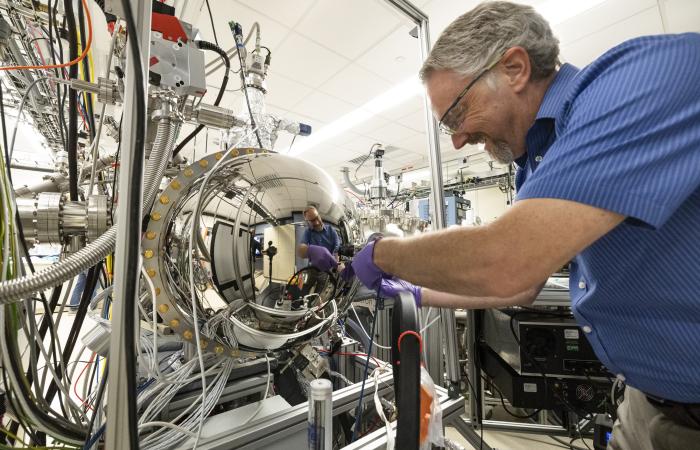クェーサーのフレアと減衰の速さを説明できるかもしれない新発見 New finding might explain why quasars flare and fade so quickly
2023-09-20 ノースウェスタン大学
◆このサイクルは数か月で繰り返され、従来の数百年という考え方とは大きく異なります。この発見は、クェーサーやブラックホールの謎の挙動を説明するのに役立つ可能性があります。従来の理論が説明できない急激な変動が、新しいシミュレーションで説明できるかもしれません。
<関連情報>
- https://news.northwestern.edu/stories/2023/09/black-holes-eat-faster-than-previously-expected/
- https://iopscience.iop.org/article/10.3847/1538-4357/ace051
ブラックホール降着円盤の3次元GRMHDシミュレーションで、ノズル衝撃、円盤引き裂け、ストリーマが高速降着を引き起こす Nozzle Shocks, Disk Tearing, and Streamers Drive Rapid Accretion in 3D GRMHD Simulations of Warped Thin Disks
Nicholas Kaaz, Matthew T. P. Liska, Jonatan Jacquemin-Ide, Zachary L. Andalman, Gibwa Musoke, Alexander Tchekhovskoy, and Oliver Porth
The Astrophysical Journal Published 2023 September 20
DOI:10.3847/1538-4357/ace051

Abstract
The angular momentum of gas feeding a black hole (BH) may be misaligned with respect to the BH spin, resulting in a tilted accretion disk. Rotation of the BH drags the surrounding spacetime, manifesting as Lense–Thirring torques that lead to disk precession and warping. We study these processes by simulating a thin (H/r = 0.02), highly tilted (τ=65°) accretion disk around a rapidly rotating (a = 0.9375) BH at extremely high resolutions, which we performed using the general-relativistic magnetohydrodynamic code H-AMR. The disk becomes significantly warped and continuously tears into two individually precessing subdisks. We find that mass accretion rates far exceed the standard α-viscosity expectations. We identify two novel dissipation mechanisms specific to warped disks that are the main drivers of accretion, distinct from the local turbulent stresses that are usually thought to drive accretion. In particular, we identify extreme scale height oscillations that occur twice an orbit throughout our disk. When the scale height compresses, “nozzle” shocks form, dissipating orbital energy and driving accretion. Separate from this phenomenon, there is also extreme dissipation at the location of the tear. This leads to the formation of low-angular momentum “streamers” that rain down onto the inner subdisk, shocking it. The addition of low-angular momentum gas to the inner subdisk causes it to rapidly accrete, even when it is transiently aligned with the BH spin and thus unwarped. These mechanisms, if general, significantly modify the standard accretion paradigm. Additionally, they may drive structural changes on much shorter timescales than expected in α-disks, potentially explaining some of the extreme variability observed in active galactic nuclei.



